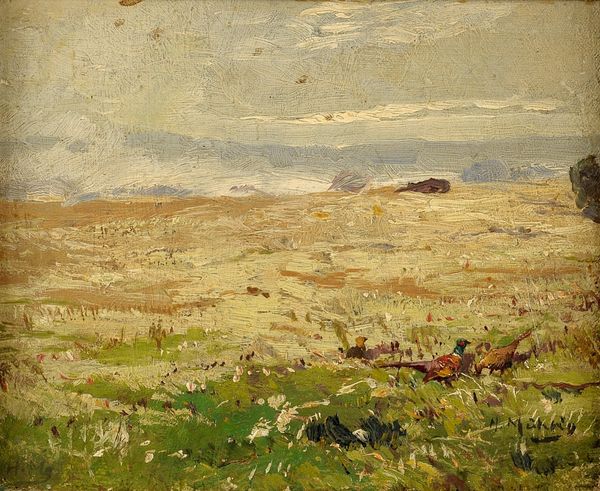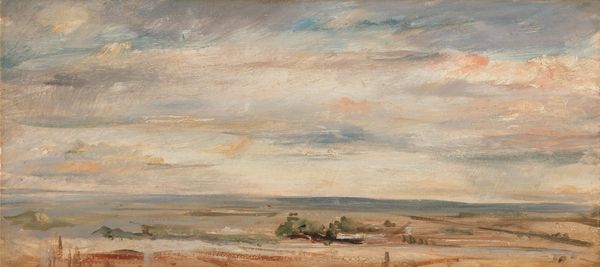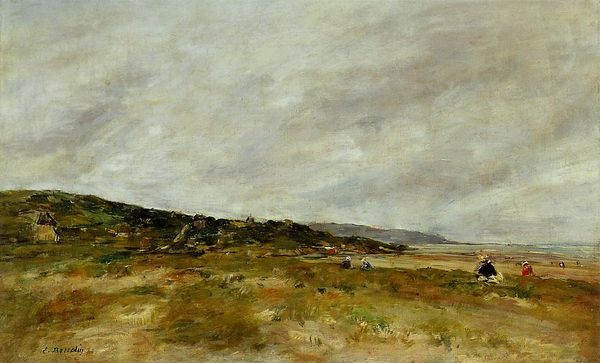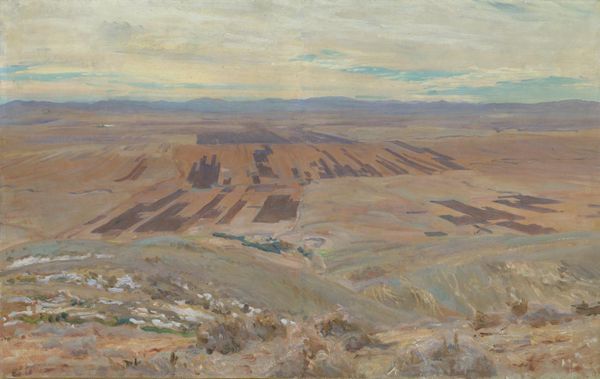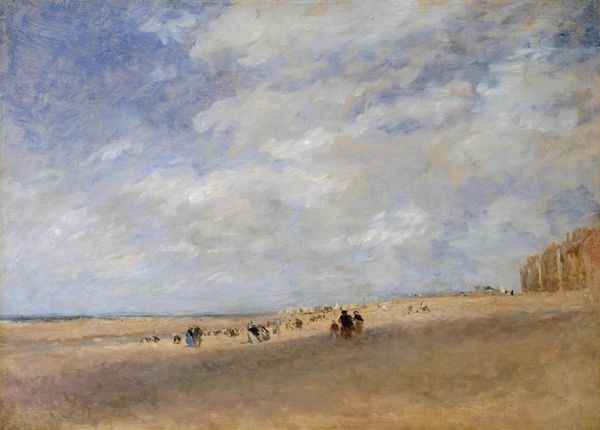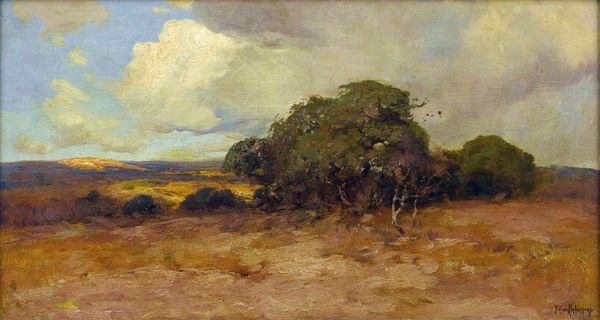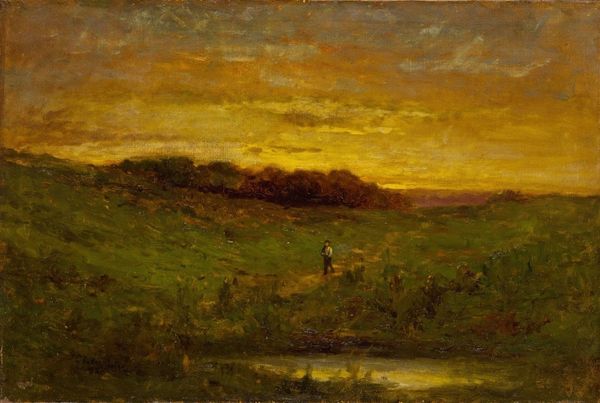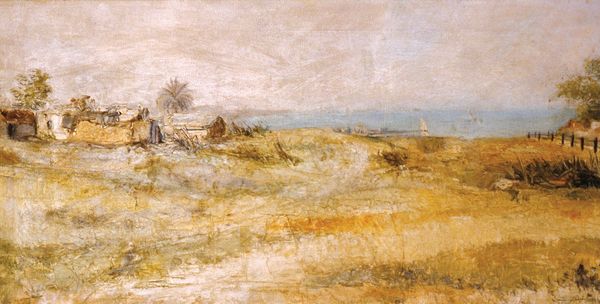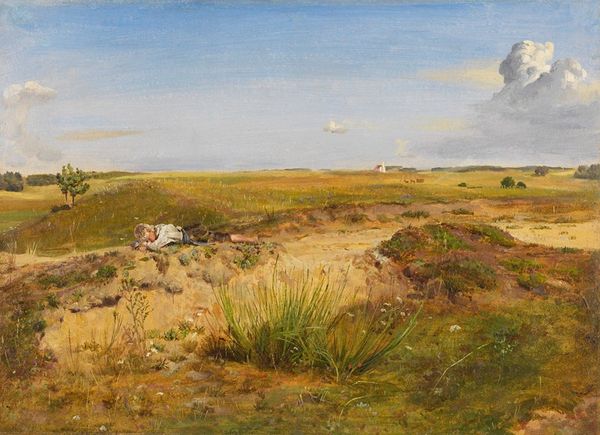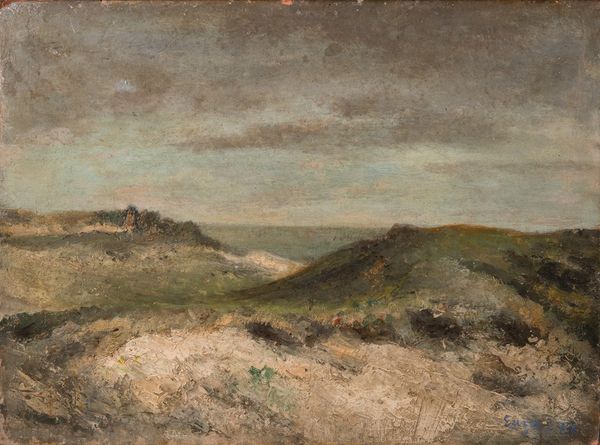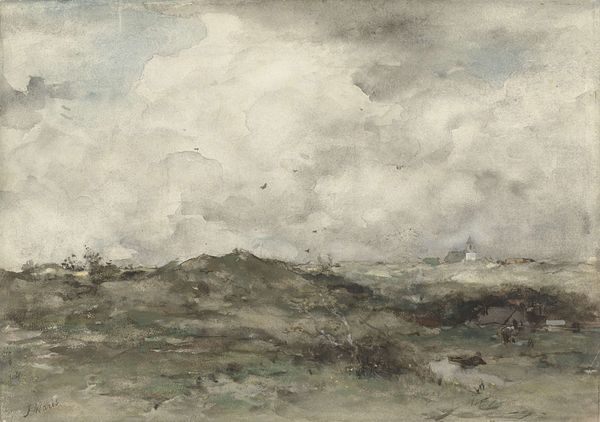
Dimensions: support: 1321 x 1959 mm frame: 1575 x 2225 x 145 mm
Copyright: CC-BY-NC-ND 4.0 DEED, Photo: Tate
Editor: This is "The Harvest Moon" by William McTaggart. I find it very evocative. The figures almost blend into the landscape. What do you see in this piece? Curator: I see a commentary on labor, and perhaps exploitation, embedded in the seeming tranquility. McTaggart, painting during the late 19th century, invites us to consider the romantic vision of rural life versus the realities of agricultural work. What's idealized and what's omitted? Editor: That's a good point. I was only looking at the surface, its beauty, and not the underlying message about the harvesters' work. Curator: Exactly! It’s a reminder to question whose story is being told, and whose is being erased. Editor: I’ll definitely look at landscapes differently now. Curator: Me too! There's always more to uncover beneath the visible.
Comments
tate 8 months ago
⋮
http://www.tate.org.uk/art/artworks/mctaggart-the-harvest-moon-n04701
Join the conversation
Join millions of artists and users on Artera today and experience the ultimate creative platform.
tate 8 months ago
⋮
McTaggart frequently worked on the same view from more or less the same spot and, rather like Monet, he often recorded the same spread of fields at different times of the day or year. The setting for this picture is near the artist's home, Dean Park, at Broomiknowe, Midlothian, and comparisons can be drawn with works such as Hayfield, Broomiekowe (1889, Kirkcaldy Museum and Art Gallery) and The Barley Field, Sandy Dean (1905, Robert Fleming Holdings), which are painted from almost the same viewpoint. In all these works McTaggart witnessed the rotation of the crops from cereals to hay and expanded the view towards the low Moorfoot Hills. For each picture he employed a different palette, according to the light and atmospheric conditions. The Harvest Moon, 'glows with warm amber, buff and gold, the twilight sky a soft shade of green' (Errington 1989, p.116), giving the sense of a warm evening at the height of summer. In the foreground children sprawl on the grass, lulled to sleep by the warmth of the day. They await their parents, who have almost finished work for the day. A young couple strolls hand in hand through the cut meadows, and in the middle distance the newly-harvested stooks of corn are clearly visible. In 1883 McTaggart may have seen the Impressionist exhibition staged by Durand-Ruel at Dowdeswell's Gallery in Bond Street; and from this date onwards he began painting even his largest canvases out of doors. He based this work on a smaller study on panel, now in the National Gallery of Scotland. Like the study, the finished version is sketchy in its handling; and like an Impressionist painting, the figures are subordinated to the overall atmosphere. All detail is suppressed and McTaggart concentrates on building up the composition in horizontal bands of golden colour, interspersed with soft lilacs, pinks and reds. As Errington notes, 'the cornfields …seem to offer natural opportunities for playing with contrasted touches of pure, or nearly pure colour, but the artists's use of these touches of colour is intuitive, rather than systematised according to any optical principles' (Errington, p.116). Further reading:Lindsay Errington, William McTaggart 1835-1910, Edinburgh 1989, pp.116-7, reproduced p.117, in colour. Frances FowleDecember 2000
